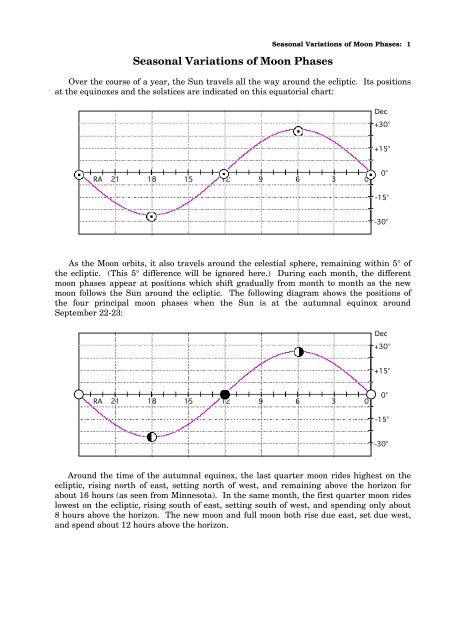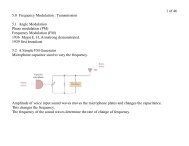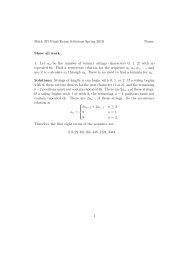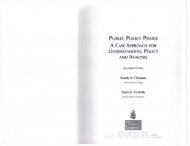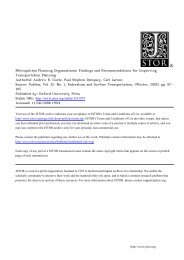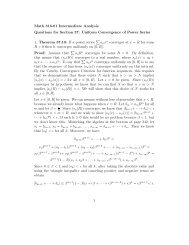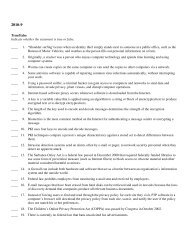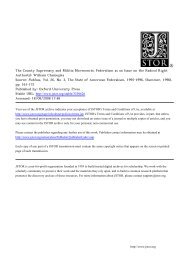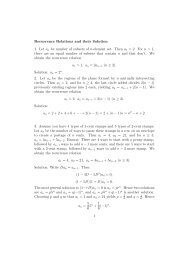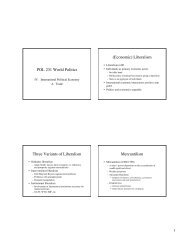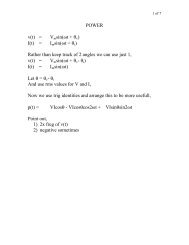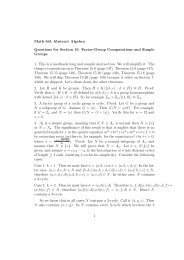Seasonal Variations of Moon Phases - MavDISK
Seasonal Variations of Moon Phases - MavDISK
Seasonal Variations of Moon Phases - MavDISK
You also want an ePaper? Increase the reach of your titles
YUMPU automatically turns print PDFs into web optimized ePapers that Google loves.
<strong>Seasonal</strong> <strong>Variations</strong> <strong>of</strong> <strong>Moon</strong> <strong>Phases</strong><br />
Over the course <strong>of</strong> a year, the Sun travels all the way around the ecliptic. Its positions<br />
at the equinoxes and the solstices are indicated on this equatorial chart:<br />
RA<br />
21 18 15 12 9 6 3 0<br />
As the <strong>Moon</strong> orbits, it also travels around the celestial sphere, remaining within 5° <strong>of</strong><br />
the ecliptic. (This 5° difference will be ignored here.) During each month, the different<br />
moon phases appear at positions which shift gradually from month to month as the new<br />
moon follows the Sun around the ecliptic. The following diagram shows the positions <strong>of</strong><br />
the four principal moon phases when the Sun is at the autumnal equinox around<br />
September 22-23:<br />
RA<br />
<strong>Seasonal</strong> <strong>Variations</strong> <strong>of</strong> <strong>Moon</strong> <strong>Phases</strong>: 1<br />
21 18 15 12 9 6 3 0<br />
Around the time <strong>of</strong> the autumnal equinox, the last quarter moon rides highest on the<br />
ecliptic, rising north <strong>of</strong> east, setting north <strong>of</strong> west, and remaining above the horizon for<br />
about 16 hours (as seen from Minnesota). In the same month, the first quarter moon rides<br />
lowest on the ecliptic, rising south <strong>of</strong> east, setting south <strong>of</strong> west, and spending only about<br />
8 hours above the horizon. The new moon and full moon both rise due east, set due west,<br />
and spend about 12 hours above the horizon.<br />
Dec<br />
+30°<br />
+15°<br />
0°<br />
-15°<br />
-30°<br />
Dec<br />
+30°<br />
+15°<br />
0°<br />
-15°<br />
-30°
Three months later, near the winter solstice (December 21-22), the moon phases will<br />
appear as shown in the next diagram. This time the full moon will ride highest on the<br />
ecliptic, the new moon will ride lowest, and the quarter moons will be on the celestial<br />
equator, rising due east and setting due west. Note the tilt <strong>of</strong> the quarter moons as they<br />
turn their illuminated faces toward the Sun, located at the new moon position.<br />
RA<br />
21 18 15 12 9 6 3 0<br />
Midway between the autumnal equinox and the winter solstice (around Halloween)<br />
the moon phases would be positioned as shown below:<br />
RA<br />
<strong>Seasonal</strong> <strong>Variations</strong> <strong>of</strong> <strong>Moon</strong> <strong>Phases</strong>: 2<br />
21 18 15 12 9 6 3 0<br />
In a similar fashion, the locations <strong>of</strong> the various moon phases along the ecliptic can be<br />
easily deduced for any time <strong>of</strong> the year. The new moon lines up with the Sun, and the full<br />
moon is 180° away along the ecliptic. The first quarter moon is 90° east <strong>of</strong> the Sun and<br />
the last quarter moon is 90° west <strong>of</strong> the Sun.<br />
Dec<br />
+30°<br />
+15°<br />
0°<br />
-15°<br />
-30°<br />
Dec<br />
+30°<br />
+15°<br />
0°<br />
-15°<br />
-30°


